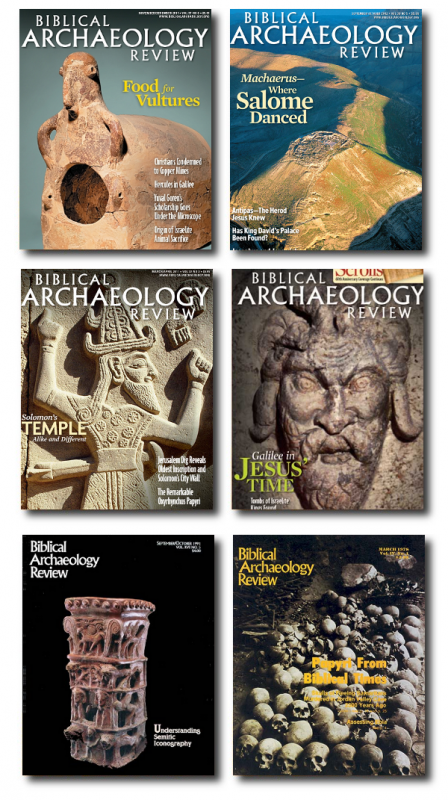A relatively small part of the remains of the biblical world has been excavated. Of some 5,000 known sites of archaeological significance in Palestine, only about 350 have been excavated, and of these only about 2 percent have been extensively excavated.
Of those that have been excavated, it is a fact that the entire Bible holds a remarkable track record of accuracy when compared with the finds unearthed through archaeology.
- “It may be stated categorically that no archaeological discovery has ever contradicted a biblical reference.” – Nelson Glueck, a respected Jewish archaeologist
- Archaeologist Nelson Glueck has concluded, “no archaeological discovery has ever been made that contradicts or controverts historical statements in Scripture”
- Gleason Archer, a scholar of biblical studies and languages of recent years, writes about attributes of the Bible: “As I have dealt with one apparent discrepancy after another and have studied the alleged contradictions between the biblical record and the evidence of linguistics, archaeology, or science, my confidence in the trustworthiness of Scripture has been repeatedly verified and strengthened by the discovery that almost every problem in Scripture that has ever been discovered by man, from ancient times until now, has been dealt with in a completely satisfactory manner by the biblical text itself-or else by objective archaeological information” (Encyclopedia of Bible Difficulties, Zondervan, Grand Rapids, 1982, p. 12).
- Opinion of Sir William Ramsay, one of the outstanding Near Eastern archeologists: “Luke is a historian of the first rank; not merely are his statements of fact trustworthy; he is possessed of the true historic sense; he fixes his mind on the idea and plan that rules in the evolution of history, and proportions the scale of his treatment to the importance of each incident. He seizes the important and critical events and shows their true nature at greater length…In short, this author should be placed among the very greatest of historians.”
- Frank E. Gaebelein, an eminently qualified author and general editor of The Expositor’s Bible Commentary, has remarked that “the attitude of suspended judgment toward Bible difficulties . . . is constantly being vindicated, as archaeology has solved one Biblical problem after another, and as painstaking re-examination of discrepancies has finally led to answers” (The Expositor’s Bible Commentary, Zondervan, Grand Rapids, 1979, Vol. 1. p. 31).
- Norman Geisler, professor of theology, summarizes the findings of archaeology: “In every period of Old Testament history, we find that there is good evidence from archaeology that the Scriptures speak the truth. In many instances, the Scriptures even reflect firsthand knowledge of the times and customs it describes. While many have doubted the accuracy of the Bible, time and continued research have consistently demonstrated that the Word of God is better informed than its critics” (Baker Encyclopedia of Christian Apologetics, 1998, p. 52).
Archaeology and the Old Testament
- EBLA TABLETS—discovered in 1970s in Northern Syria. These documents were written on clay tablets from around 2300 B.C. They demonstrate that personal and place names in the Patriarchal accounts are genuine. The tablets refer to all five “cities of the plain” mentioned in Genesis 14, previously assumed to have been mere legends.
- The Merneptah Stela—was found in Egypt in 1896, which mentions Israel. Merneptah was the pharaoh that ruled Egypt in 1212-1202 B.C.) The context of the stela indicates that Israel was a significant entity in the late 13th century B.C.
- The Hittites – were once thought to be a biblical legend, until their capital and records were discovered in Turkey. In Nuzi (northeastern Iraq), an entire cache of Hittite legal documents from 1400 B.C. confirms many details of Genesis, Deuteronomy, such as: (a) siring of legitimate children through handmaidens, (b) oral deathbed will as binding, (c) the power to sell one’s birthright for relatively trivial property (Jacob & Esau), (d) need for family idols, such as Rachel stole from Laban, to secure inheritance, (e) form of the covenant in Deuteronomy exactly matches the form of suzerainty treaties between Hittite emperors and vassal kings.
- Walls of Jericho—discovery in 1930s by John Garstang confirms the account of the walls falling suddenly, and outwardly where the Israelites could clamber over the ruins into the city (Joshua 6:20).
- Ancient Seal Belonging To Baruch – In 1986, scholars identified an ancient seal belonging to Baruch, son of Neriah, a scribe who recorded the prophecies of Jeremiah (Jer. 45:11).
- In 1993, archaeologists uncovered a 9th century B.C. inscription at Tel Dan. The words carved into a chunk of basalt refer to the “House of David” and the “King of Israel.” And the Bible’s version of Israelite history after the reign of David’s son, Solomon, is believed to be based on historical fact because it is corroborated by independent account of Egyptian and Assyrian inscriptions.
- Sargon’s Palace In Iraq – It was once claimed there was no Assyrian king named Sargon as recorded in Isaiah 20:1, because this name was not known in any other record. Then, Sargon’s palace was discovered in Iraq. The very event mentioned in Isaiah 20, his capture of Ashdod, was recorded on the palace walls! Fragments of a stela (a poetic eulogy) memorializing the victory were found at Ashdod itself.
- Tablet Find – Another king who was in doubt was Belshazzar, king of Babylon, named in Daniel 5. The last king of Babylon was Nabonidus according to recorded history. The tablet was found showing that Belshazzar was Nabonidus’ son.
- Sodom and Gomorrah – The ruins of Sodom and Gomorrah have been discovered southeast of the Dead Sea. Evidence at the site seems consistent with the biblical account. The destruction debris was about 3 feet thick and buildings were burned from fires that started on the rooftops. Geologist Frederick Clapp theorizes that that pressure from an earthquake could have spewed out sulfur-laden bitumen (similar to asphalt) known to be in the area through the fault line upon which the cities rest. The dense smoke reported by Abraham is consistent with a fire from such material, which could have ignited by a spark or ground fire.
- The Exodus/ Parting the RED Sea– In 1988, Archeologist Ron Wyatt made an amazing discovery of a Chariot WEEL found on the bottom of the Red Sea. The Chariot wheel was found fixed to axels standing at attention on the seabed. Pictures document a 4-spoked chariot wheel on the Red Sea seabed. An Archeologist – Aaron Sen has dived on several occasions at this site, and can testify to the validity of the discovery of the chariot wheels. In March 1998, he photographed the remains of a four-spoke chariot wheel, and has taken up human bones of which there is ‘dozens’ scattered on the seabed. A human ribcage encrusted in yellow coral. Many bones of men and horses were seen at the site, and some were collected. One specimen was validated at the Department of Osteology at Stockholm University, proving to be a human, male, right side femur.
- Shechem Temple Dated Late Bronze Age to Early Iron Age Cf. the “House of (the god) Baalberith” in Judges 9.
- Tumuli located west of Jerusalem. The 19 tumuli dating to the Judean monarchy possibly represent sites of memorial ceremonies for the kings as mentioned in 2 Chronicles 16:14, 21:19, 32:33, and the book of Jeremiah 34:5
- Boundary markers For Gezer Walls And City Gate. 1st century BC Hebrew inscriptions found engraved on rocks several hundred meters from the tel read “boundary of Gezer.”
- Balaam Texts – Found during controlled excavations at Deir Alla, Jordan. The texts (painted in ink on a plastered wall and painstakingly reconstructed) describe the visions of seer named Balaam (cf. Numbers 22–24)
- Black Obelisk of Shalmaneser III The obelisk depicts Jehu, son of Omri, king of Israel, and also mentions Hazael of Aram/Damascus/Syria (cf. 2 Kings 8–10)
- “Goliath” The Ostracon Pottery Fragment- is incised with nine letters representing two names (אלות and ולת) etymologically related to Goliath (גלית).
- Izbet Sartah Ostracon – Dated 1200 – 1000 BC – 5 incised lines of 80–83 letters (readings of epigraphers vary), the last line being an abecedary.
- Jehoiachin’s Rations Tablets –Dated 6th century BC Excavated from Babylon during 1899–1917 by Robert Koldewey, stored in a barrel-vaulted underground building consisting of rows of rooms near the Ishtar Gate
- Lachish Ostraca Pottery Fragments- describe conditions in Judah shortly before the first Babylonian invasion. Letter #3 mentions a warning from the prophet; letter #4 names Lachish and Azekah as among the last places being conquered (cf. Jeremiah 34:7); letter #6 describes a conspiracy reminiscent of Jeremiah38:19 and 39:9 using phraseology nearly identical to Jeremiah 38:4.
- Nebo-Sarsekim Tablet -The tablet mentions a Babylonian official (Nebo-Sarsekim) who may be a identical with Sarsekim, an official mentioned in Jeremiah 39:3.
- Pim Weights – Found at Gezer; many others found since. Inscribed with a translation of 1Samuel 13:21
- Lachish Reliefs Found during excavations of Sennacherib’s palace at Nineveh The reliefs depict the Assyrian conquest of Lachish.
- Pontius Pilate Found in secondary use in a stairway of the Roman theater in Caesarea Insribed : “The prefect of Judaea, Pontius Pilate, erected the Tiberium (in honor of Tiberius Caesar)”
- Sargon II’s Conquest of Samaria Inscription Found at Khorsabad (modern Iran) in 1843 The inscription reads: “I besieged and conquered Samaria, led away as booty 27,290 inhabitants of it. … The town I rebuilt better than it was before and settled therein people from countries which I myself had conquered.” ( 2 Kings 17:23–24).
- Tiglath-Pileser III’s Inscriptions Found at Nimrud “I received the tribute of … Jehoahaz of Judah” (incident not mentioned in the Bible); ANET 283: “As for Menahem I overwhelmed him … I placed Hoshea as king over them.” ( 2 Kings 15:19 and 17:3)
- Zayit Stone Limestone boulder incised with a abecedary and remnants of other inscriptions in a South Canaanite development of the basic Phoenician script common to the Palestinian Levant. The wall in which the boulder was found was sealed by a destruction layer dated to the 10th century BC, but the inscription pre-dates the destruction layer and may belong to the early-mid 11th century BC.
- Elephantine Papyri Upper Egypt. The papyri are not from controlled excavations but their authenticity is undoubted. The papyri are from a Jewish community living in Egypt during the Persian Empire. They record, among other matters, the relationship of this community with the Temple in Jerusalem
- Kurkh Monolith Discovered by J.E. Taylor at Diyarbekir, Turkey, in 1861. This monolith of Shalmaneser III mentions “2,000 chariots, 10,000 foot soldiers of Ahab the Israelite”
- Siloam Inscription In The Hezekiah Tunnel, Jerusalem.- The tunnel was documented by Robinson in 1838,but the inscription (near the centre of tunnel, where the two work-gangs met) was not discovered until 1880. It was removed from Jerusalem the same year, and is presently in the Archaeological Museum at Istanbul.- The inscription records the completion of the tunnel, intended to bring water into.
- Belshazar Tablet- “Nebo-Sarsekim is mentioned in the Bible in chapter 39 of the Book of Jeremiah. According to Jeremiah, this man was Nebuchadnezzar II’s “chief officer” and was with him at the siege of Jerusalem in 587 BC, when the Babylonians overran the city. Many skeptics have doubted this claim, but in July of 2007, Michael Jursa, a visiting professor from Vienna, discovered Nebo-Sarsekim’s name (Nabu-sharrussu-ukin) written on an Assyrian cuneiform tablet! This tablet was used as a receipt acknowledging Nabu-sharrussu-ukin’s payment of 0.75 kg of gold to a temple in Babylon, and it described Nebo-Sarsekim as “the chief eunuch” of Nebuchadnezzar II, king of Babylon. The tablet is dated to the 10th year of the reign of Nebuchadnezzar II, 595BC”
- Nebo-Sarsekim Tablet – In January of 2008, archaeologists discovered a stone seal bearing the name of one of the families who acted as servants in the First Temple (and then returned to Jerusalem after being exiled to Babylonia). The seal was uncovered in an archaeological excavation in Jerusalem’s City of David. It was 2,500 years old at the time of its discovery, and it contained the name “Temech” engraved on its surface. It was discovered amid stratified debris in an excavation just outside the Old City walls near the Dung Gate. According to the Book of Nehemiah, the Temech family were servants of the First Temple and were exiled to Babylon following its destruction by the Babylonians in 586 BC. Nehemiah lists them among many other families in Nehemiah 7:6, 46, 55
- Temech Seal– In November of 2007, the remnants of the wall were uncovered in an archaeological excavation in Jerusalem’s ancient City of David. Historians once doubted the historicity of Nehemiah’s account of the restoration of Jerusalem. Nehemiah arrived in Jerusalem as governor in 445 BC. With the permission of the Persian king, he decided to rebuild and restore the city after the destruction of the First Temple by the Babylonians. The Book of Nehemiah records the completion of this wall in just 52 days. This find strengthens claims that King David’s palace was also found at the site.
Sodom and Gomorrah
The ruins of Sodom and Gomorrah have been discovered southeast of the Dead Sea. Evidence at the site is consistent with the biblical account. The destruction debris was about 3 feet thick and buildings were burned from fires that started on the rooftops. Geologist Frederick Clapp theorizes that that pressure from an earthquake could have spewed out sulfur-laden bitumen (similar to asphalt) known to be in the area through the fault line upon which the cities rest. The dense smoke reported by Abraham is consistent with a fire from such material, which could have ignited by a spark or ground fire.
- Wadi Mukatteb Writings – Ancient inscriptions ALSO have been found at the Wadi Mukatteb (“The Valley of Writing”) on the Sinai Peninsula. It has been commonly agreed by experts that the escaped Hebrew slaves of Egypt made the inscriptions as they passed through the area under the leadership of Moses.
- Ketef Hinnom Scrolls – Found under controlled conditions by Gabriel Barkay during the excavation of an ancient burial chamber found was Ketef Hinnom scrolls. They were two small silver scrolls containing texts similar to, although not identical with, the Priestly Blessing from the Book of Numbers and parallel verses of Exodus (20:6) and Deuteronomy (5:10 and 7:9). They have been dated Immediately prior to 586 BC.
The story of Sodom and Gomorrah can be found true with the vast overwhelming evidence that has been found:
1. The Bible refers to a metropolis of five cities in the Dead Sea area. Five, and only five cities, have been found in the Dead Sea area.
2. The Bible refers to a conquest by the Mesopotamians. The artifacts found in the Dead Sea area show a Mesopotamian influence.
3. The Midrash describes the metropolis as a thriving population. The enormous number of burials in the large cemeteries attests to a great population.
4. The Talmud and the Midrash describe the area as an agricultural wonderland. The great diversity of agricultural products found in the ruins verify the lush produce enjoyed by the area’s inhabitants.
5. According to the Talmud, there was a span of only 26 years between a war in the area and the ultimate destruction. Devastation levels found in Numeira (Sodom) are consistent with the Talmud’s assertion.
6. The Talmud states that Sodom, unlike other cities in the area, only existed for 52 years. The ruins in Numeira (Sodom) indicate that the city lasted less than 100 years.
7. The Bible attributes the destruction of the cities to a fiery storm that rained down from above. Thick layers of burnt material covering the remains of the cities in the area bear this out. It is interesting that people still deny that what happened in Sodom and Gomorrah were false, but with all the information that has been uncovered through archaeology, it sure makes you want to read the story again in the bible to see why The Lord God spoke out Judgement.
The Plagues of Egypt
In the Bible we find in Exodus 7 – 12 when Moses and Aaron approached Pharaoh, and delivered God’s demand that the Israelite slaves be allowed to leave Egypt so they could worship God freely.
After an initial refusal by Pharaoh, God sent Moses and Aaron back to show him a miraculous sign of warning – Aaron’s staff turned into a serpent. Pharaoh’s sorcerers also turned their staffs into snakes, but Aaron’s Snake then proceeded to swallow their Snakes before turning back to a staff.
Pharaoh’s heart was hardened and he REFUSED to let the Jewish slaves free. GOD- (YHWH) then delivered 10 plagues upon Egypt to demonstrate who the TRUE and living God was – and the rescue of his people to return to Israel.
- Diodorus Siculus,- Greek Historian from Sicily living from 80 BC to approximately 15 BC (20 years before Christ’s birth in AD 5 or 6) Diodorus Siculus wrote, “In ancient times there happened a great plague in Egypt, and many ascribed the cause of it to God, who was offended with them because there were many strangers in the land, by whom foreign rites and ceremonies were employed in their worship of the deity. The Egyptians concluded; therefore, that unless all strangers were driven out of the country, they should never be freed from their miseries.”
Creationist Perspectives on Antediluvian (Pre-flood) Civilizations
- Ancient Atomic Knowledge? by Ooparts & Ancient High Technology – Evidence of Noah’s Flood
“Thirteen nuclear reactors existed in “prehistoric” periods along the 200-metre mine bed at Oklo –it was discovered in 1972, and they were comparable to the modern nuclear reactor in power and heat combustion. This mine had the capability of enabling self-sustained nuclear chain reactions”. This discovery shocked the entire scientific community back in 1972. The “evidence” will largely fit in four categories. 1)Descriptions in what are thought to be the oldest written texts by man still in existence. 2)Discovery of archeological sites which demonstrate characteristics, including high levels of radiation, consistent with an atomic explosion and)3)physical evidence (changes in the sand) similar to those found at the site of current day atomic explosions.4)Bingo! Evidence of depleted uranium with plutonium products!”
- History, Pre-History, Archaeology, and Evolution News Archive
- Forbidden Archeology by Michael A. Cremo @ Amazon.com
- Fossilized Human Finger by
- Preflood Traditions The Weakness of John Pilkey’s Origin of the Nations by Roy L. Hales
- Signs of Ancient City off Cuba 2/01/01
- The mystery of ancient man by Steve Cardno. Creation Magazine Vol. 20 Issue 2
- The Riddle of the Ooparts by Charles Scott Kimball
- Underwater Cities; Noah’s Flood Proof? by Ooparts & Ancient High Technology – Evidence of Noah’s Flood
Antediluvian Artifacts
- Bell in Coal by Genesis Park
- Cretaceous Hammer by Genesis Park
- Forbidden Archaeology (book review) by Genesis Park
- Odd Things in Wrong Places from Time Upside Down by Erich von Fange
- Pot Found in Coal by Creation Truth Ministries
- Remains in Coal and Rock by Pathlights
- The Iron Cup in Coal by Creation Evidences Museum







